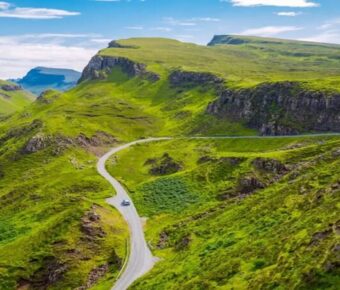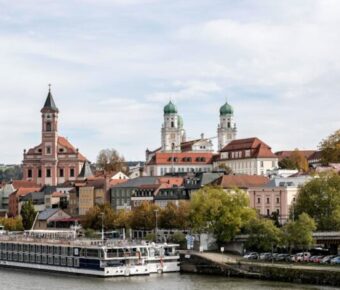
Slow Travel Itineraries Spain by Train: 7 Hidden Routes for Authentic Local Experiences
Ever thought about exploring Spain at a slower, more rewarding pace? Spain by train lets you move gently, really soaking in the landscapes, and gives you time to feel each city and village you pass. Slow travel in Spain by train isn’t just about landmarks—it’s about stories, flavors, and memories that stick with you.
Honestly, some of the best moments in Spain hide away from the guidebooks, tucked into corners only slow trains reach. I’ve spent years chasing sunsets from the rails, chatting with locals at tiny stations, and wandering colorful cities with no real rush. If you’re curious how to do the same, keep reading. You’re about to get smarter ways to plan, travel, and discover.
Table of Contents
- Key Takeaways
- Why Choose Slow Travel in Spain by Train?
- Benefits of Slow Travel
- Immersive Experiences
- Environmental Impact
- Understanding Spain’s Rail Network
- Overview of High-Speed and Regional Trains
- Key Train Operators: Renfe and Eurail Pass
- Train Tickets and Reservations
- Planning Your Slow Travel Itinerary
- Curating Unique Routes
- Recommended Duration for Key Destinations
- Seasonal Travel Tips
- Iconic Slow Train Routes Through Spain
- Transcantábrico: Exploring Northern Spain
- Al-Andalus: Journey Through Andalusia
- Sóller Train: Mallorca’s Scenic Railway
- Slow Itineraries for Spain’s Major Cities
- Madrid by Train
- Barcelona by Train
- Seville and Andalusian Cities
- Valencia and the Mediterranean Coast
- Cultural Highlights and Experiences
- Flamenco Shows and Andalusian Traditions
- Spanish Cuisine and Local Food Tours
- Guided Walking Tours of Historic Quarters
- Top Landmarks to Explore Along the Rail Route
- Madrid: Royal Palace and Retiro Park
- Barcelona: Sagrada Familia and Park Güell
- Seville: Alcázar and Jewish Quarter
- Granada: Alhambra and Albaicín
- Hidden Gems and Off-the-Beaten-Path Stops
- Ronda and Its Dramatic Views
- Malaga: Picasso Museum and Alcazaba
- Toledo and Segovia Day Trips
- Regional Rail Adventures: Basque Country and Beyond
- Basque Country’s Coastal Train Journeys
- Valencia’s Mercado Central and Local Culture
- Palma de Mallorca’s Sóller Train
- Essential Slow Travel Tips for Train Journeys in Spain
- Booking and Seating Recommendations
- Packing Smart for Rail Travel
- Navigating Train Stations
- Experiencing Spain Like a Local
- Connecting with Culture Through Food
- Participating in Local Festivals
- Exploring Neighborhoods Beyond Tourist Hubs
- Frequently Asked Questions
- What are the top scenic train routes to take for a leisurely exploration of Spain?
- Can you recommend a leisurely train itinerary encompassing Spain’s cultural highlights?
- How do I plan a relaxed, immersive train journey through Spain’s lesser-known gems?
- What tips can enhance my slow travel experience by train across Spain?
- What are the best seasons for a slow-paced rail journey through the Spanish countryside?
- How do I handle train travel disruptions in Spain and adjust my itinerary accordingly?
- Book Your Dream Experience
- More Travel Guides
Key Takeaways
- Slow train travel in Spain lets you savor real local experiences
- Carefully planned rail itineraries reveal famous and hidden highlights
- Essential tips help make your Spain by train journey smooth and memorable
Why Choose Slow Travel in Spain by Train?
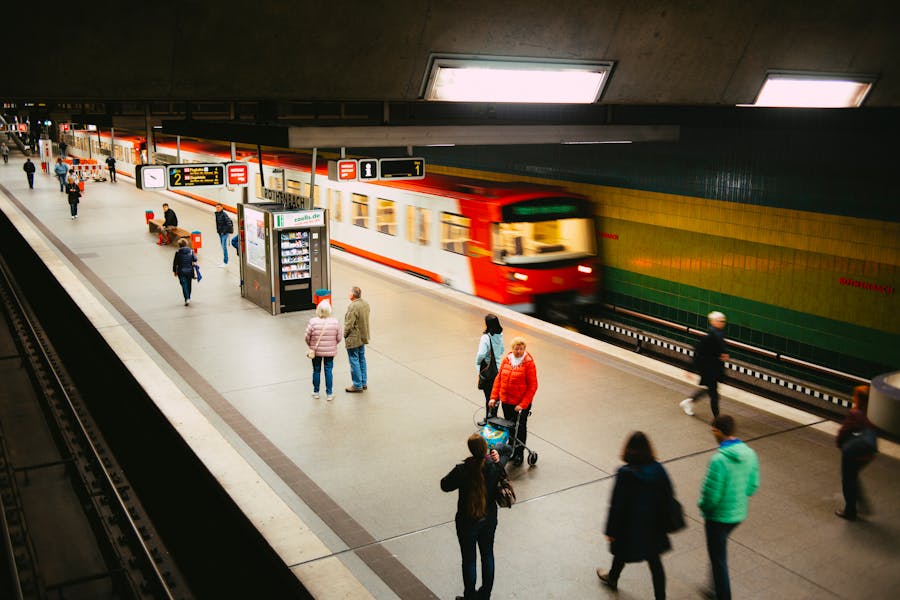
Traveling Spain by train means you see more than just the highlights. The pace is relaxed, the scenery is gorgeous, and the whole experience can shift how you see the country.
Benefits of Slow Travel
When you travel slow, you actually get to soak up the places you pass through—not just tick them off a list.
Instead of airport chaos or endless highways, hopping trains across Spain gives you a chance to breathe. You can read, jot down thoughts, or just gaze out the window while someone else handles the driving. There’s something special about rolling past orange groves or sleepy stone villages, coffee in hand. It’s honestly one of my favorite ways to spend a morning.
Slow travel helps you find those hidden spots you’d miss on a quick trip. Maybe you hop off in Lleida or Jerez, grab a fresh pastry, or have a chat with a conductor. These unscripted moments? That’s the real Spain.
Immersive Experiences
Spain by rail puts you inside a moving gallery. Medieval cities, olive fields, and hidden coves flick past your window. You’ll hear accents shift, try regional foods at station cafés, and realize Spain is so much more than Madrid and Barcelona.
One afternoon, I stopped off in Córdoba on a whim and stumbled onto a tiny art market selling local crafts. No tour guide, no plan—just a random adventure that made the trip feel personal.
Here’s why it’s so immersive:
- Meet locals: Trains are where real conversations happen. Ask for recommendations—you’ll get better tips than any app.
- Flexible routes: Spain’s train network is huge. Want to add León or Ronda last-minute? Go for it.
- Easy pace: No mad dash from hotel to airport. You arrive relaxed and ready to explore.
Environmental Impact
Choosing the train in Spain over flying or driving really cuts your carbon footprint.
Trains use less energy per passenger mile. Most of Spain’s main lines, run by Renfe, use electric trains. So you get comfort and a trip that’s easier on the planet.
When I learned a train ride from Madrid to Barcelona creates way less CO2 than a short flight, I felt good about my choice. It’s a small thing, but knowing your travel helps keep Spain beautiful for the next person—it matters. And if you’re like me, you’ll probably want to come back.
Understanding Spain’s Rail Network
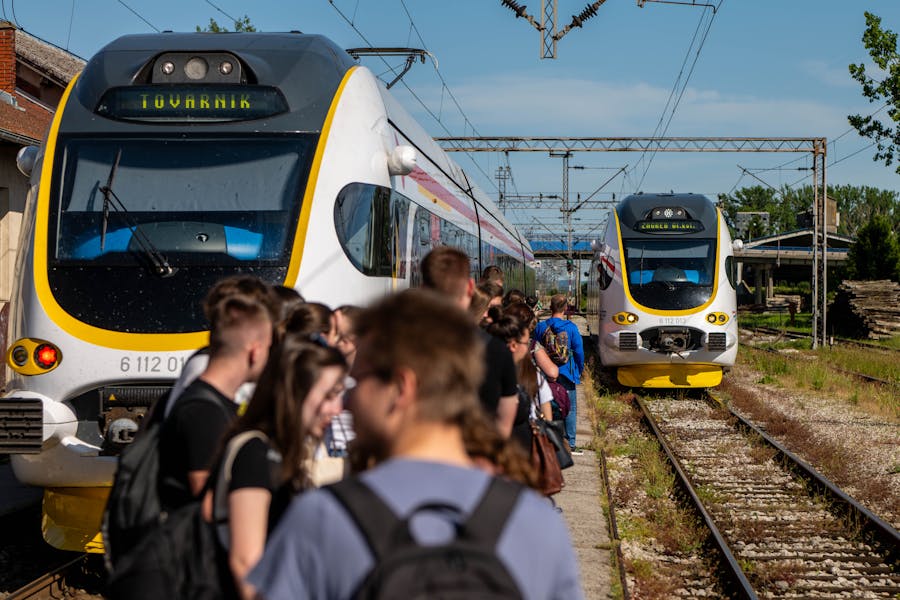
Exploring Spain by train isn’t just easy—it’s one of the most relaxing and scenic ways to see the country. Whether you’re after quick city links or a slow ride through the countryside, Spain’s rail system gives you options.
Overview of High-Speed and Regional Trains
Spain’s famous high-speed trains, the AVE, zip you between big cities like Madrid, Barcelona, Seville, and Valencia at speeds that’ll make your ears pop. I’ve dozed off on one and woken up in a totally different climate—can’t complain about that.
But honestly, the slower regional trains are where you’ll find the magic if you want that real slow travel vibe. These routes meander through small towns and rolling hillsides you’d never notice by car. Once, I hopped a Cercanías train (that’s their local line) and ended up sharing churros with a family from Valladolid. You just don’t get that on a plane.
If “seeing” Spain means really getting to know it, mix high-speed for distance with regional trains for experience.
Key Train Operators: Renfe and Eurail Pass
Renfe runs Spain’s trains—both the speedy AVE and the relaxed regional lines. Their routes reach almost every corner, from the Basque Country to Andalucia.
If you’re planning several train trips during your stay, the Eurail Pass might be handy. You get flexible travel—pick your days within a set period—and you can hop on and off most Renfe trains. Some high-speed AVE services do require a bit extra for seat reservations, though, and not every regional train is included.
I’ve found mixing tickets—a few one-off Renfe fares for short hops, plus a Eurail Pass for longer journeys—can save money and headaches.
Train Tickets and Reservations
Buying train tickets in Spain is usually straightforward, but there are a few quirks. For high-speed AVE and many long-distance trains, you’ll need a reservation. That means picking your exact seat and time ahead. Trains can sell out, especially in summer or on Spanish holidays, so plan a bit ahead if you want options.
Regional or commuter lines like Cercanías are much more relaxed. You can buy tickets just before boarding, no seat assignments, and trains run pretty often. Still, double-check schedules—you don’t want to get stranded in a charming village after the last train leaves.
Buying tickets at the station works, but the Renfe website or app saves time and usually supports English. Sometimes the machines get fussy with credit cards, so keep some cash handy. If you’re using a rail pass, check if you need a reservation on your specific train—you don’t want to be stuck at the platform.
Planning Your Slow Travel Itinerary

Crafting a slow travel itinerary for Spain by train means making the most of your time, taking in less-visited towns, and moving at your own pace. You’ll get to experience both famous cities and quiet villages, with plenty of time to wander and savor each stop.
Curating Unique Routes
When picking routes, don’t just bounce between major cities. Madrid and Barcelona are classics for a reason, but the rails open up places like Córdoba, León, and Ronda—spots most tourists skip.
Try looping through smaller towns with old cathedrals, sleepy squares, and family-run tapas bars. After a couple days in Madrid, hop a train south to Córdoba, then Seville, instead of sticking only to the high-speed corridor. Take slower regional trains now and then; it’s easier to chat with locals, and sometimes you’ll spot a field of sunflowers that makes you want to hop off.
Day trips are a game-changer. Madrid is perfect for quick hops to Toledo or Segovia. I’m a fan of random detours, so always leave some “wiggle room” for an unplanned village. And if you hate spreadsheets, you can usually find last-minute places to stay close to the station.
Recommended Duration for Key Destinations
Give yourself breathing room—racing from city to city just turns your trip into a blur of train platforms. I’d say at least three nights in big cities like Madrid or Seville. That’s how you fit in a day trip and a lazy café morning.
Regions like Andalusia or Catalonia deserve even longer. Between old quarters, markets, and quirky museums, two or three nights in Córdoba, Granada, or Girona lets you actually settle in. Even small towns can keep you busy for a weekend if you chat with locals and wander the side streets.
For a two-week trip, pick no more than four main bases. Use them as hubs and sprinkle in day trips by rail. You’ll keep the pace gentle and avoid constant suitcase-hauling.
Seasonal Travel Tips
Seasons in Spain really shape your journey. Spring and early fall are my favorites—cities are lively but not sweltering. Summer? It gets brutally hot in Madrid, Seville, or Córdoba. If you must go in July or August, shift north to Asturias, Galicia, or the Basque Country for cooler air.
Winter has a slower rhythm, especially in the south. You’ll dodge crowds, get cheaper hotels, and train seats are easier to find, but daylight hours are short. I’d bring layers unless you love gray, misty afternoons.
Festivals like Semana Santa make towns vibrant but crowded. If you want to experience these, book trains and accommodation well ahead. Otherwise, aim for quieter periods to enjoy Spain at its calmest.
Iconic Slow Train Routes Through Spain

Traveling by train in Spain is so much more than getting from A to B. These journeys let you slow down, see the countryside up close, and discover places that rarely make it into guidebooks.
Transcantábrico: Exploring Northern Spain

Ever dreamed of rolling through lush hills, dramatic coastlines, and ancient towns? The Transcantábrico is a ride you won’t forget. It’s not just a train—it’s a rolling hotel winding across northern Spain. You’ll travel from Santiago de Compostela to San Sebastián, stopping in seafood villages and old mining towns along the Bay of Biscay.
Onboard, you get classic décor, cozy cabins, and a restaurant car. The pace is slow—honestly, it’s a treat to sip coffee and watch green valleys and wild Atlantic views slip by. Some days you’ll hop off to stroll cobbled streets or sample cider. It’s not the fastest way across the north, but for soaking up the region’s atmosphere, nothing beats it. There’s just something special about it.
Al-Andalus: Journey Through Andalusia
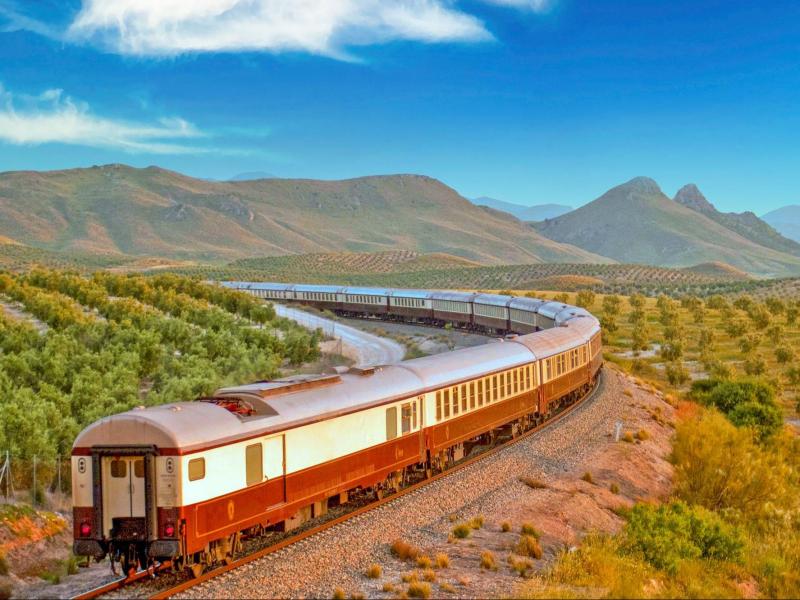
Heading south, the Al-Andalus train gives you a way to explore Andalusia that’s swish, vintage, and honestly a bit glamorous. Board in Seville or Granada, and you’ll wind through whitewashed villages, sunflower fields, and Moorish palaces like the Alhambra. Every stop feels like a scene from a classic Spanish film.
This is southern Spain in slow motion—ornate carriages, soft seats, and big windows for soaking up endless skies. The route changes with the seasons, but you might wake up in Cádiz or Córdoba, with a gentle rattle and a view of olive trees. It’s perfect if you want to mix culture, food, and that unique Andalusian magic at a gentler pace. I always leave with new stories and, sometimes, a sunburn.
Sóller Train: Mallorca’s Scenic Railway
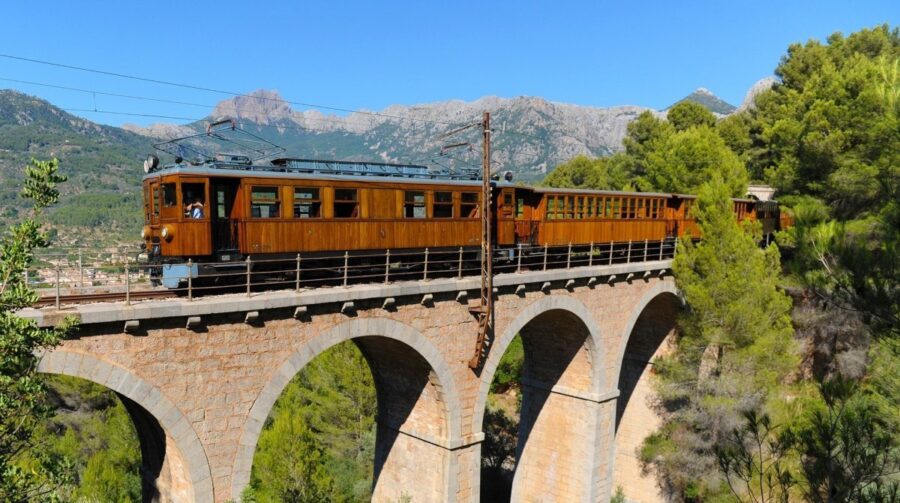
Mallorca isn’t just beaches—there’s a lot more hiding in those hills. If you hop on the historic Sóller Train from Palma and head up to the mountain town of Sóller, you’ll see a side of the island most visitors miss.
The train rattles through orange groves, tunnels, and sleepy valleys in these gorgeous old wood-paneled carriages. Honestly, you’ll feel like you’ve time-traveled back to the 1920s.
Here’s a little secret: grab a seat on the left side when leaving Palma. That’s where the mountain views really hit you—there’s always at least one moment that’ll have you reaching for your camera. The ride isn’t long, maybe an hour tops, but the curves and the scenery make it feel like a mini adventure.
Once you step off in Sóller, do yourself a favor and grab a fresh orange juice. The fruit here is ridiculously good, grown right around town. This is everyday Mallorca, the kind people here actually live—not just postcard stuff.
Slow Itineraries for Spain’s Major Cities
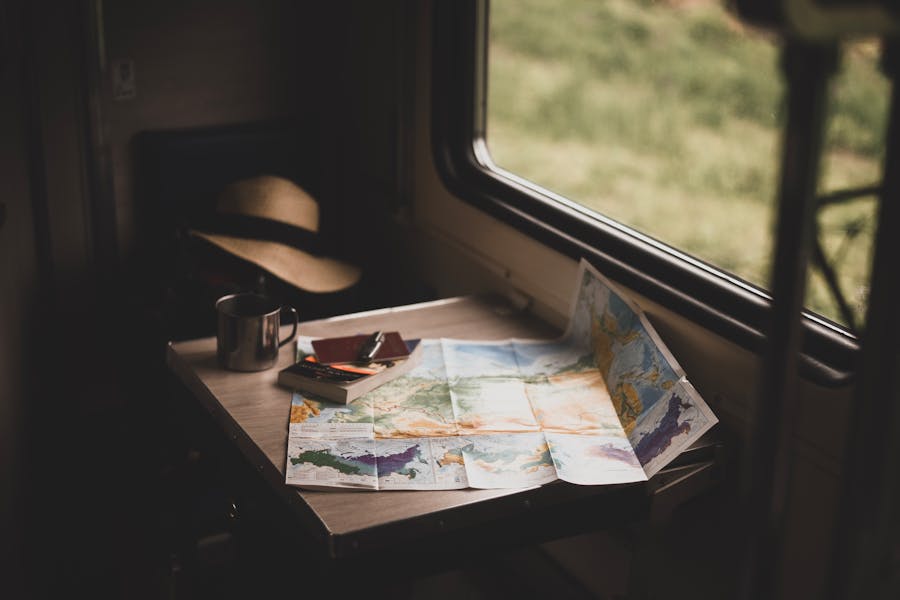
If you slow down and take the train through Spain’s cities, you’ll notice so much more than just the famous sights. Suddenly, you’re watching the churro vendor outside the station or catching how the sunlight hits an old stone wall in a forgotten alley.
People-watching gets way better, too. Honestly, it’s a whole lot less stressful than rushing around with a car or cramming in every “must-see.”
Madrid by Train
Madrid is a city of little moments. Order a coffee at Atocha station and just watch the world go by—commuters, kids, travelers heading off in every direction. The high-speed trains here are impressive, but I’d say slow down.
Spend a lazy morning wandering Retiro Park, then maybe stroll over to the Prado. Don’t rush the galleries—Velázquez deserves your time, even if you’re not a hardcore art fan.
Stick to central neighborhoods like Malasaña or La Latina for a more lived-in feel. You’ll find tiny cafes, indie shops, and maybe a bar where nobody bothers to speak English. Try a bocadillo there just for the experience.
Atocha station is worth a look around, too—there’s this indoor garden that always surprises people. If you feel like a quick change of scene, the AVE trains to Córdoba or Toledo make great day trips. But don’t pack your schedule too tight; Madrid’s best bits sneak up on you.
Barcelona by Train

Barcelona really shines in its quieter corners, far from the crowds snapping selfies at Gaudí’s big works. When you catch a train from Sants station, you’ll see locals heading to work and discover neighborhoods you’ve probably never heard of.
Sometimes, those lesser-known spots end up being the most memorable. Walk along Passeig de Gràcia, then duck into Mercat de Sant Antoni for fresh fruit or cheap seafood snacks.
The Gothic Quarter is full of surprises—some alleys feel like secret passageways. Personally, I love catching a train out to Sitges or Figueres to get a sense of Catalonia beyond Barcelona.
Rail travel here is a lifesaver—trust me, driving in Barcelona is a headache you don’t need. Take it slow, snap a photo of some weird graffiti, and enjoy how the city flips between old and new with every block.
Seville and Andalusian Cities

Seville feels like it was built for wandering. When you arrive by train, Santa Justa station is easy to handle and drops you right near the center. You’ll notice the slower southern pace immediately—everyone seems to have time for another coffee.
Hang out at Plaza de España, then cross the river to Triana for pottery shops and tapas bars that haven’t changed in decades. High-speed trains shoot you over to Córdoba and Granada, but honestly, a lazy morning in a Granada tea house is hard to beat.
Andalusia’s regional trains reach smaller towns too—Jerez for sherry, Ronda for those unforgettable cliffside views. Don’t overthink your itinerary. Sometimes the best moments come from wandering under the orange trees with no plan at all.
Valencia and the Mediterranean Coast

Valencia doesn’t get enough love, honestly. Its Estació del Nord is gorgeous, with Art Nouveau tiles and sunlight everywhere—way more charm than any airport.
Start slow with a walk through the Turia Gardens, a massive green park in an old riverbed. The Central Market is lively but never feels rushed; sip a horchata and let yourself get tempted by the seafood. Valencia is smaller and easier than Madrid or Barcelona, and that Mediterranean vibe keeps things chill.
Trains run up and down the coast, so it’s easy to make a quick side trip to Albufera Natural Park or head north to Castellón. You’ll see orange groves and rice fields rolling past your window, a nice break from city noise. If a seaside town looks inviting, just hop off and explore—there’s almost always something unexpected.
Cultural Highlights and Experiences
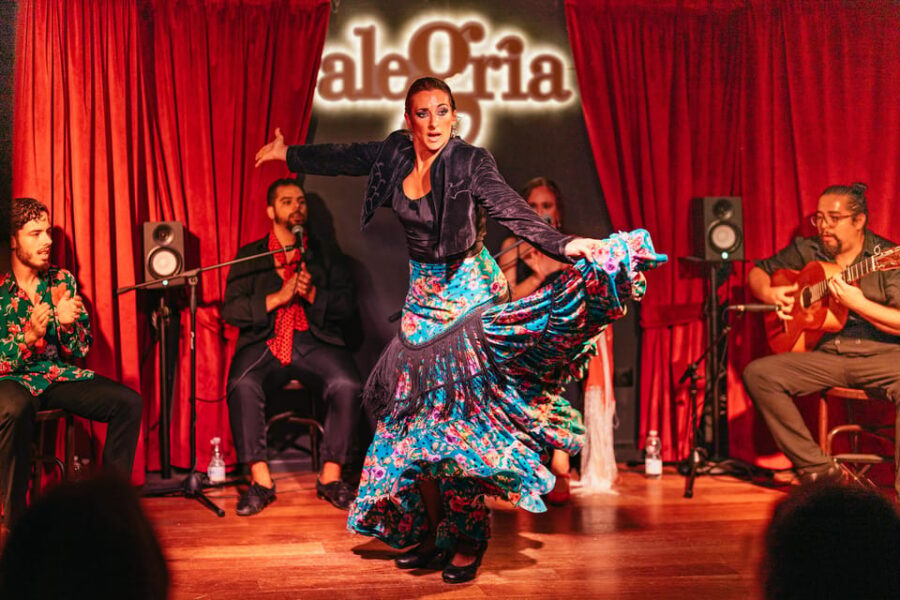
Traveling Spain by train isn’t just about getting from A to B. The rails take you straight into the country’s everyday rhythm—neighborhoods, traditions, and flavors most tourists never notice.
Flamenco Shows and Andalusian Traditions
If you haven’t seen a live flamenco show in Seville, you’re missing something unforgettable. The music, the stomping, those intense faces—it’s all raw emotion, nothing staged or fake about it.
Plenty of venues offer “tablaos” where you can get right up close to the dancers and musicians. Flamenco isn’t just dance; it’s storytelling, every clap and twirl packed with meaning.
Skip the big touristy places if you can—smaller spots feel way more real. If you’re lucky enough to visit during Feria de Abril in Seville or Holy Week in Malaga, you’ll be surrounded by horses, parades, and costumes that feel straight out of another era.
Booking tickets for flamenco shows and local experiences ahead of time isn’t a bad idea. Sites like this one make it pretty painless.
Spanish Cuisine and Local Food Tours
You haven’t really traveled Spain until you’ve spent too long at a tapas bar. I love hopping between bars in Granada or Madrid, sampling local ham, olives, garlic prawns, or classic tortilla. Sometimes you even get a free tapa with your drink—always feels like a win.
In Valencia, I once joined a paella cooking class with a chef who insisted on showing every little secret. Food tours take you straight into local markets, like Mercado de la Boqueria in Barcelona, and you’ll end up nibbling jamón or manchego right from the stall.
Each region has its own specialties. If you’re into food, guided tours unlock hidden eateries and regional menus you’d never find alone. For a taste of the best, check out Spanish cuisine tours in nearly every city.
Guided Walking Tours of Historic Quarters
A good walking tour can change the way you see a city. I always start in the old quarters—Madrid’s Barrio de las Letras or Seville’s Santa Cruz are perfect.
The streets twist and turn, often lined with flowers spilling off balconies. You’ll walk paths once used by kings, poets, and rebels.
Local guides usually have stories you won’t find in any book. I remember one in Toledo who brought the old Jewish quarter to life with tales that felt personal.
If you love history, take your time, ask questions, and let the city’s layers reveal themselves. Walking these neighborhoods always ends up being my favorite part of the trip.
Top Landmarks to Explore Along the Rail Route
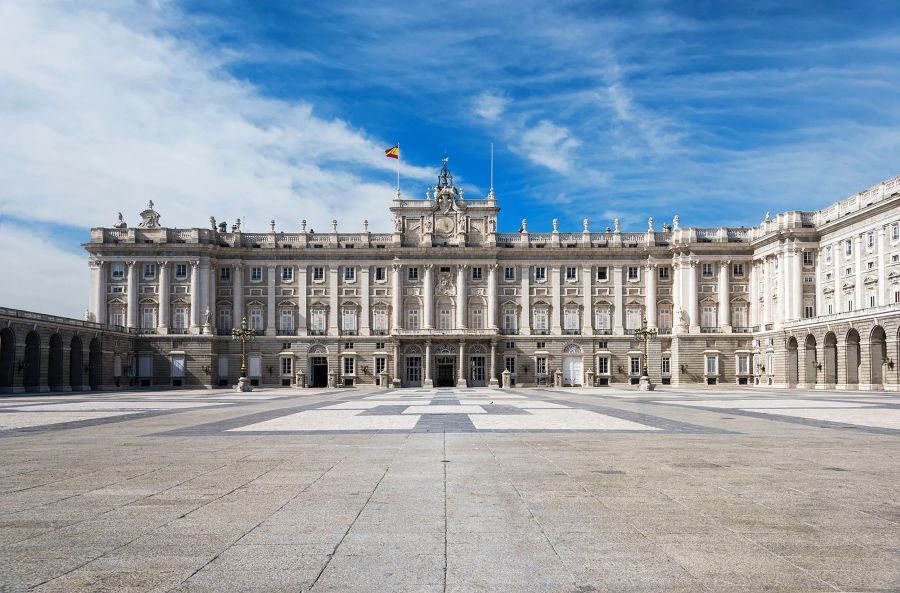
Some of Spain’s best train journeys drop you right at the doorstep of iconic sites. You’ll get a mix of history, wild architecture, and even a few green escapes in the middle of all the city action.
Madrid: Royal Palace and Retiro Park
There’s nothing like rolling into Madrid by train and heading straight for the Royal Palace. It’s massive—over 3,000 rooms (don’t worry, you won’t see them all)—and the state rooms are pure gold-trimmed drama. The mirrored throne room is a neck-craner, trust me.
Retiro Park is just a short walk away. It’s sprawling, easy to get lost in, and always full of locals jogging or snoozing in the shade. You can rent a rowboat or just wander to the Crystal Palace. I like to grab a bocadillo and watch families feed the ducks. It’s easy to forget you’re in Spain’s biggest city.
| Landmark | Type | Must-See Highlight |
|---|---|---|
| Royal Palace | Historical site | Ornate Throne Room |
| Retiro Park | Urban park | Crystal Palace & Lake |
Barcelona: Sagrada Familia and Park Güell
Barcelona has this dreamy vibe, probably thanks to Gaudí’s wild imagination. The Sagrada Familia isn’t finished yet, but stepping inside is still a jaw-dropper. The morning light through the stained glass is unreal—if you can drag yourself out of bed early, do it.
Park Güell isn’t far off, and it’s another Gaudí wonderland. Sure, the mosaic lizard is on every postcard, but wandering those curvy paths is way more fun. Some days you’ll catch street musicians, and the city views are perfect for a photo you’ll actually want to print.
Heads up: Book your Sagrada Familia ticket ahead. The lines get wild.
Seville: Alcázar and Jewish Quarter
Take the train south and you’ll land in Seville, where the Alcázar mixes Moorish and Christian styles in the most beautiful way. The gardens are a highlight—I once lost half a day just wandering, sipping lemonade, and trying to spot peacocks.
The Jewish Quarter sits right outside. It’s a maze of shady lanes and orange trees, and you’ll probably get turned around (I circled the same plaza three times once). Look for the old synagogue-turned-church and keep your eyes open for hidden patios and tiny tapas bars.
Landmark Highlight:
- Alcázar: Mudéjar ceiling art, lush gardens
- Jewish Quarter: Winding streets, historic patios
Granada: Alhambra and Albaicín
Granada’s Alhambra is the kind of place you plan your whole day around. Go early if you can—the Nasrid Palaces are the main event, and the arches and reflecting pools are easy to get lost in. I nearly missed my entry once because I kept stopping for the views.
Down the hill, Albaicín is the old Moorish quarter, full of whitewashed houses and steep stone alleys. Your legs might complain, but the views are worth it—especially from Mirador de San Nicolás. Grab a tea and watch the sunset light up the Alhambra. If you like getting lost, this is your spot.
Hidden Gems and Off-the-Beaten-Path Stops
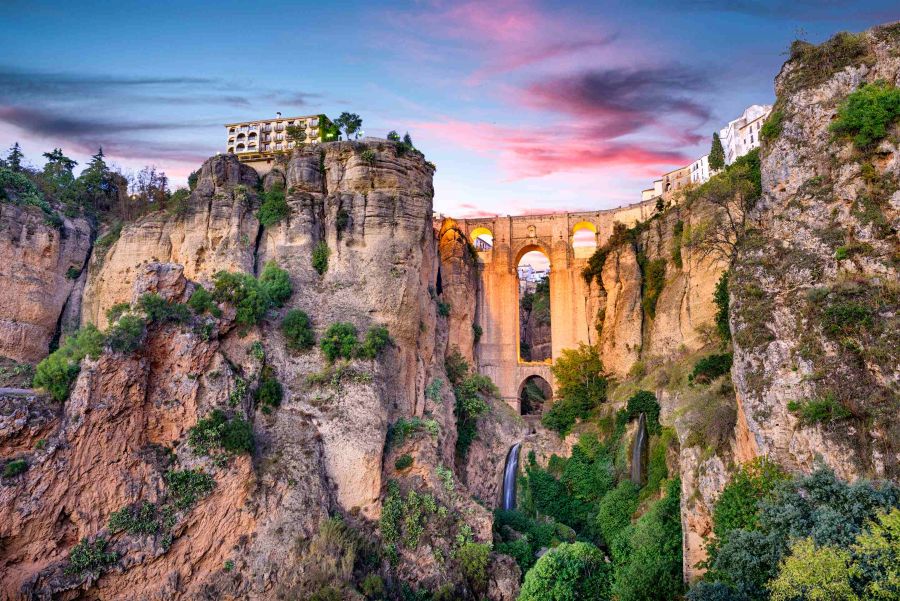
Traveling Spain by train isn’t just about the big cities. With a little curiosity, you’ll find detours that lead to dramatic landscapes, oddball art collections, and old towns where history still feels alive. Sometimes the best memories come from the places you stumble into without planning.
Ronda and Its Dramatic Views
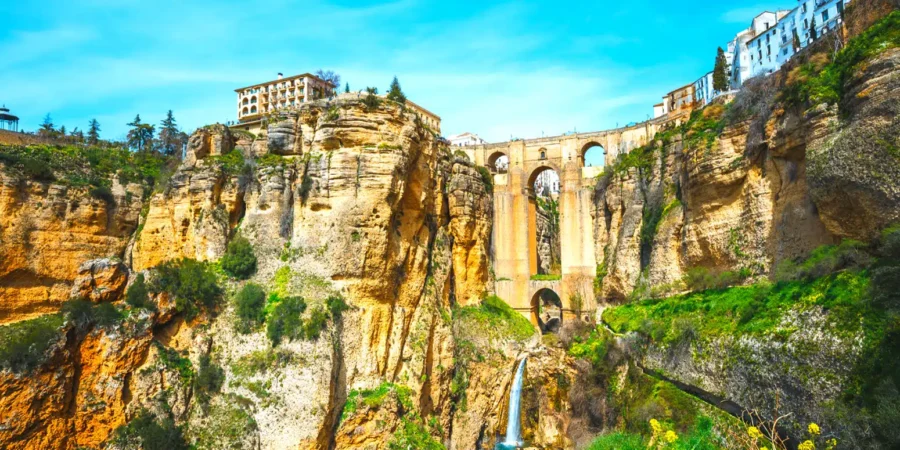
Ronda’s got all the classic Andalusian charm, but hardly anyone bothers to hop off the train here. When you do, though, you get hit with those wild cliffs and the Puente Nuevo bridge that everyone photographs but never quite captures.
I remember standing on that bridge, wind in my face, peering down at the El Tajo gorge—my knees actually wobbled a bit. The adrenaline rush is real.
But hey, don’t just stare at the views. Wander the old town and you’ll find whitewashed houses, tiny tapas bars where everyone seems to know your business, and the Plaza de Toros—one of Spain’s oldest bullrings. Oh, and the Roman theater on the edge of town? Way quieter than the famous ones, which makes it feel like your own little secret.
Getting here is half the adventure. Trains run from Málaga or Madrid, but you might have to jump on a local train or bus at the end. Honestly, that’s part of the fun. Take it slow, wander aimlessly, and don’t rush lunch—Ronda’s fresh cheese is something I still dream about.
Malaga: Picasso Museum and Alcazaba
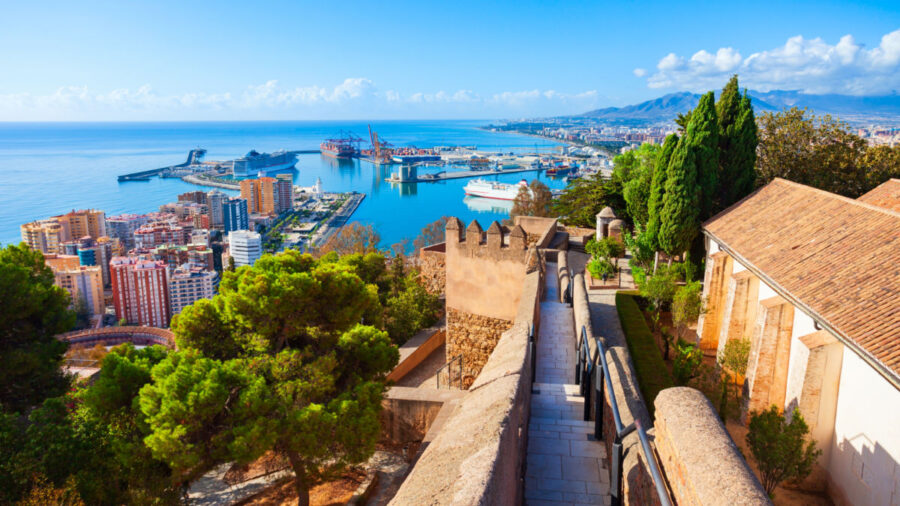
Malaga often gets overshadowed by the Costa del Sol’s beaches, but the city itself is a gem if you know where to look. If you’re even a little into art, make a beeline for the Picasso Museum.
It’s not just because Picasso was born here (though that’s cool); the collection has this personal vibe, full of sketches and paintings that somehow pull you into his world. Afterwards, wander up to the Alcazaba.
This Moorish fortress looks out over the city and port, and honestly, the gardens here rival anything in Granada. The paths wind through orange trees and fountains, and if you time it right in the late afternoon, you might just have the place to yourself.
History buffs should check out the Roman theater just below the Alcazaba. It’s free, and you can actually sit on those ancient stones. With the fortress looming above and the sea breeze in your hair, you really feel Malaga’s layers.
Toledo and Segovia Day Trips
Madrid makes a solid home base, but don’t get stuck in the city—there’s so much nearby, and the trains make it a breeze. Toledo hits you right away with its hilltop perch, medieval walls, and those winding old lanes. I get lost in Toledo’s maze every single time, and honestly, that’s part of the magic.
Sure, the cathedral is stunning, but I find the smaller chapels and the alcázar are where you really feel the city’s spirit. Grab some marzipan (everyone says to, and they’re right), and just soak up the atmosphere.
Segovia? Totally different energy. The train zips you there in under half an hour, and suddenly you’re gawking up at that massive Roman aqueduct. It’s surreal—still towering right through the middle of town.
Don’t just snap a photo and leave. Hike up to the fairy-tale Alcázar of Segovia (it looks like a storybook castle) and poke around the Romanesque churches. Segovia’s roast suckling pig is legendary, but even if you just park yourself in the main square with a coffee, you’ll feel like you’ve stumbled into another era.
Regional Rail Adventures: Basque Country and Beyond

Taking the train in Spain lets you see places at their real, unhurried pace. You get to taste what’s local, watch the countryside roll by, and skip the endless highways. It’s honest travel, and I think it’s the best way to get under a place’s skin.
Basque Country’s Coastal Train Journeys
Ever dreamed of winding through green hills with the wild Atlantic smashing against the shore? The Basque Country’s narrow-gauge trains are made for that. Start in Bilbao—maybe after checking out the Guggenheim or some local pintxos—then hop on those old-school carriages.
The train hugs the coast from Bilbao to San Sebastián, passing tiny fishing villages and stops where you just have to get off, stretch, and maybe grab a pintxo or two. I once stepped off in the middle of nowhere, sandwiched between the tracks and the wild sea, and time just seemed to stop.
Keep your eyes peeled for Art Nouveau buildings in San Sebastián or get off at sleepy towns where you’ll find more dogs than people. This trip is about the ride, not the destination. Grab a window seat and let the scenery do its thing.
Things to Try on the Basque Coastal Rails:
- Sip fresh txakoli wine by the sea
- Pop into the Basque Railway Museum
- Spend an hour in a fishing port like Zumaia—no crowds, just sea air
Valencia’s Mercado Central and Local Culture
Valencia sneaks up on you. When you get off at Estació del Nord, it’s all palm trees and sunny plazas, but the Mercado Central is what hooks you. This isn’t some touristy market—it’s a buzzing iron-and-glass hall where fishmongers shout and locals haggle.
Grab some real oranges here; they taste nothing like what you get at home, trust me. From the market, it’s a short walk to the Valencia Cathedral—if you’re curious, you can check out the supposed Holy Grail—or just wander the winding lanes.
Do yourself a favor and stroll through Turia Gardens. They turned an old riverbed into a garden with fountains, playgrounds, and even a skate park. The City of Arts and Sciences pops up nearby, all futuristic glass and curves, and it kind of feels like you’ve landed in another world.
Valencia’s pace is slow in the best way. You actually have time to breathe, not just tick off sights.
Insider Tips:
- Try horchata and fartons for breakfast
- Climb the Miguelete Tower for killer views (and a leg workout)
- Walk or rent a bike for the whole Turia Gardens—worth every step
Palma de Mallorca’s Sóller Train
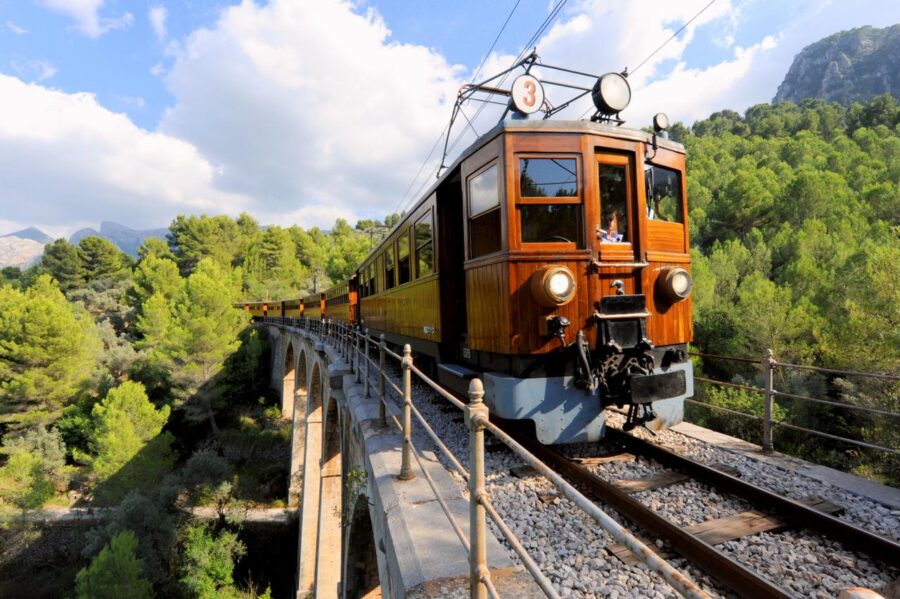
The Sóller train in Palma de Mallorca is pure nostalgia—over a hundred years old, wooden carriages, squeaky windows, the whole deal. It chugs out of Palma, rattling through lemon orchards, olive groves, and tunnels carved into the Tramuntana mountains.
If you’re even a little bit into vintage travel, this ride feels like you’ve stepped into a storybook. When you reach Sóller, you find lazy plazas, old stone buildings, and oranges everywhere.
Don’t rush back. Walk down to Port de Sóller if you’ve got the energy, or hop on the old tram. The vibe here is perfect for anyone who likes their travel slow and their views dramatic. Grab a table outside, order an ensaïmada, and just watch the world go by.
Highlights of the Sóller Route:
- Sip local orange juice in Sóller’s main square
- Ride the wooden tram to Port de Sóller
- Explore the Serra de Tramuntana—good shoes make a difference
Essential Slow Travel Tips for Train Journeys in Spain
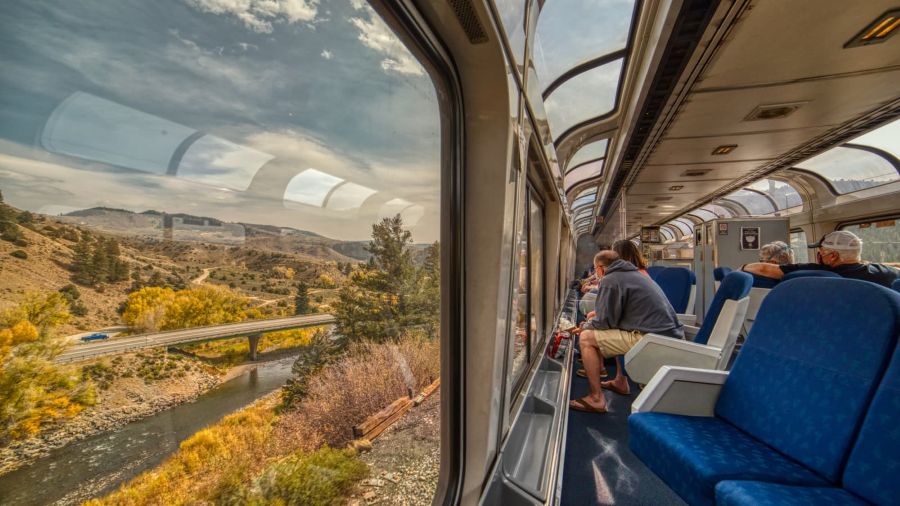
Spain’s railways make it easy to slow down, but a bit of planning goes a long way. From booking tickets and picking the right seat to finding your way through big stations like Madrid’s Atocha and packing light, the little things can make your trip way smoother.
Booking and Seating Recommendations
Getting the right train ticket in Spain is all about timing and knowing your options. For high-speed AVE trains, booking early means better prices. Don’t forget—seat reservations are a must for most AVE and long-distance routes, so don’t just show up and wing it.
If you’re city-hopping, Renfe lets you book online, and there are new low-cost options that make train travel cheaper than ever. I always try for a window seat, especially on scenic routes along the Basque coast or heading into the Picos de Europa.
Think about ticket flexibility. Some fares are dirt cheap but can’t be changed, so if you like to keep things loose (and who doesn’t?), pay a little extra for flexibility. Most stations aren’t huge, so arriving 20-30 minutes early is plenty—no need to show up an hour ahead.
Packing Smart for Rail Travel
Spanish trains have luggage racks above the seats and at the carriage ends, but dragging a monster suitcase around is never fun. Go for a small rolling bag or backpack—it’ll save you hassle, especially if you have to dart up or down stairs at a busy stop.
Your slow train essentials? A refillable water bottle, snacks, a travel pillow, and a power bank (because not all trains have USB sockets). Sunglasses are a must—the Spanish sun can be brutal through those big windows.
Need to stash your luggage while exploring? Check out luggage storage near big stations and city centers. I’ve forgotten headphones before—don’t make that mistake. Music makes those long stretches of countryside way more enjoyable.
If you’re a train nerd, jot down your route or highlight stations to spot along the way. And if you need last-minute gear, order online for quick delivery to your hotel.
Big Spanish train stations can feel overwhelming, especially in Madrid or Barcelona. Madrid Atocha is basically its own city, with gardens, shops, escalators, and sometimes even lines for security before you board high-speed trains.
When you get there, check the electronic boards for your platform (“vía”) number. Sometimes they don’t post it until the last minute, so don’t stress if it’s missing at first. Signs are usually in Spanish and English, but staff are generally helpful if you ask. Just saying “Dónde está el tren a [your destination]?” usually works.
Give yourself a little extra time to find your platform, especially if you’re switching between regional and high-speed lines. If you’ve got downtime, grab an espresso or check out the cafés—honestly, train food is rarely worth rushing for unless you’re desperate for a sandwich.
For connections, double-check if you need to go through ticket barriers again; some stations make you do this even if you’re just changing trains. Personally, I use my smartphone’s map indoors to remember where I came in—easy to lose your bearings, especially when you’re tired.
Pause, people-watch, and soak up the gentle chaos. That’s half the fun of slow travel, isn’t it?
Experiencing Spain Like a Local
If you’re serious about slow travel in Spain, ditch the rush and slide into local rhythms. Spanish culture is everywhere—on your plate, in the plazas, echoing out of flamenco bars late at night.
Honestly, my favorite memories aren’t from ticking off sights, but from blending in and letting Spain surprise me. Isn’t that what travel’s really about?
Connecting with Culture Through Food
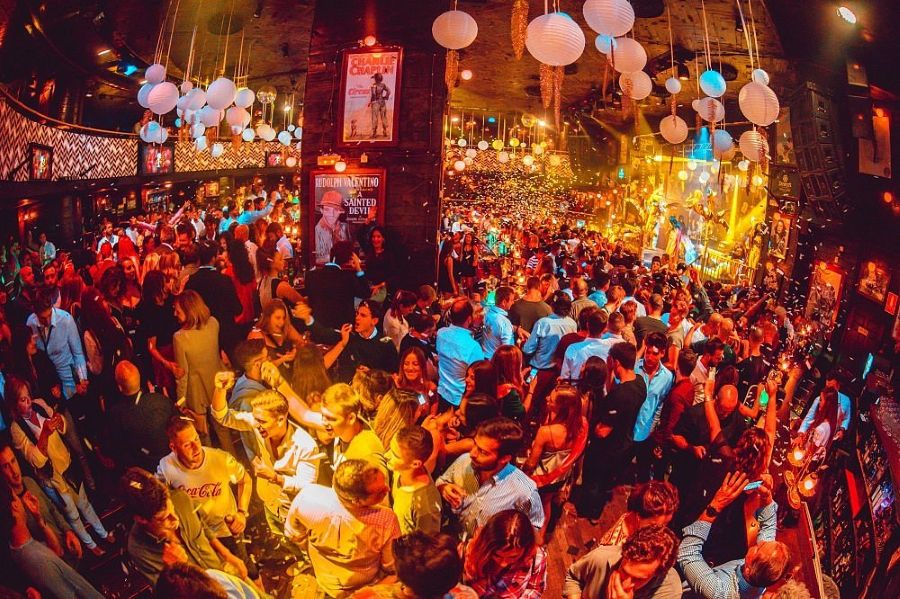
Honestly, you can learn more about Spain by eating than by reading any guidebook. Forget those tourist menus—just squeeze into the local bars where everyone’s talking over each other and the napkins pile up on the floor.
Stand at a crowded tapas counter in Granada. Order a tinto de verano, and suddenly you’re handed a plate of spicy chorizo and olives you’ll be thinking about for years.
Try these food experiences:
- Go on a tapas crawl in Seville. Every bar’s got its own claim to fame, so don’t just stick to one.
- Wander a neighborhood market like Mercado de la Boqueria in Barcelona. Order “pa amb tomàquet” and cheese, or just ask the vendor what’s good today.
- Linger over a late lunch in a sleepy town. Trust me, there’s no rush—locals savor their meals and you should too.
Don’t skip a flamenco show during a late-night meal. Sometimes it’s just a family singing at a back table, but those are the moments that stick with you.
Participating in Local Festivals
Spain’s festivals? They’re wild, but they’re also fiercely local. You’ll see everyone out—kids, grandparents, the whole neighborhood.
Even in big cities, something’s always happening: a street parade, food fair, or a religious procession that sneaks up on you. Check local calendars, or just keep your eyes open for posters at the station.
Once, I stumbled into a sardine-grilling fest in Málaga and ended up dancing with strangers until midnight. I didn’t catch half the lyrics, but who cares when you’re laughing that hard?
Ask around—locals love it when you join in. Sometimes they’ll drag you into a dance or press a pastry into your hand. It’s honestly the fastest way to feel like you belong, even if it’s just for one night.
Exploring Neighborhoods Beyond Tourist Hubs
Sure, La Rambla and Plaza Mayor are famous, but Spain’s real heart beats in the quieter corners.
Head up to Gràcia in Barcelona or get lost in Madrid’s Lavapiés. You’ll find a rhythm and character that the big avenues can’t match.
I always recommend wandering Sacromonte in Granada at sunset. The white cave houses are something else, and sometimes you’ll hear flamenco echoing through the alleys.
In the evenings, locals crowd into tiny taverns to unwind. The energy’s different—slower, but somehow more alive.
Try this:
- Hop on a local bus instead of the metro. You’ll see the city from a whole new angle.
- Pop into a corner bakery, or just sit at a playground bench for a while.
- If a café is packed at noon, grab a seat. That’s usually a good sign.
You might get a few curious looks—especially if your Spanish is as rusty as mine—but honestly, that’s half the fun. And you never know which winding street will become your new favorite spot.
Frequently Asked Questions
Traveling Spain by train—slowly—lets you soak up towns and flavors you’d never notice if you rushed. There’s a magic in letting the journey itself become the main event. I never get tired of that.
What are the top scenic train routes to take for a leisurely exploration of Spain?
No question, the ride from Bilbao to San Sebastián is a stunner. The train winds through Basque hills and sleepy villages.
I’ve done it twice and still can’t get enough of those green valleys. The Ferrocarril de Sóller on Mallorca? It’s short—about an hour—but the orange groves, mountains, and old wooden carriages make it feel straight out of a movie.
For longer trips, the high-speed line from Madrid to Seville covers historic cities and sweeping countryside. The old routes from León through Galicia are slower, twistier, and packed with views that’ll fill your camera roll. Don’t expect speed, but honestly, that’s the point.
Can you recommend a leisurely train itinerary encompassing Spain’s cultural highlights?
If you want maximum flavor without burning out, start in Barcelona. Take the AVE to Zaragoza for a day or two, then head to Madrid.
From there, visit Córdoba and finish in Seville. You’ll get art, tapas, Moorish palaces, and plenty of time to really sink into each city.
If you love smaller towns, add Segovia or Toledo as a side trip from Madrid. And don’t overplan—leave space to wander markets or just watch the world go by at a café.
How do I plan a relaxed, immersive train journey through Spain’s lesser-known gems?
Here’s my advice: pick one region and really dig in. I spent a week riding local trains along the Costa de la Luz, hopping off to taste seafood and wander white villages.
You don’t have to see the whole country. Just a couple of lines and a little curiosity go a long way.
Ask locals at each stop about nearby towns worth a visit. Sometimes the best tapas bars or quirky museums aren’t in any guidebook.
Go off-script. That’s where the magic happens.
What tips can enhance my slow travel experience by train across Spain?
Book a few tickets ahead—especially for popular lines or summer trips. But don’t fill every day; leave room for detours or an extra night somewhere that grabs you.
Pack light. You don’t want to lug giant bags on and off trains, trust me. Always have snacks handy, too—sometimes that train sandwich just won’t cut it.
What are the best seasons for a slow-paced rail journey through the Spanish countryside?
I’d skip midsummer. It’s crowded and the heat can be brutal, especially in the south.
Spring (April to June) is my sweet spot—fields go green, flowers are everywhere, and the towns have a relaxed energy.
Fall’s great too, especially in early October. You get grape harvests, less humidity, and those autumn colors up north.
Winter works if you stick to the south, but days are short and train schedules can get sparse.
How do I handle train travel disruptions in Spain and adjust my itinerary accordingly?
Delays and strikes? They happen—honestly, more often than you’d expect. When your train gets canceled, just walk straight to the Renfe desk.
The staff usually sort things out, but I won’t sugarcoat it: you’ll need a little patience, and maybe a snack to keep your mood up. I always stash a buffer hour or two in my plans, because, well, Spain runs on its own clock.
If you can stay flexible, you’ll survive just fine. Sometimes I just wander into a nearby town or hop on a local bus if things go sideways.
And if all else fails, why not settle in for a long lunch at the station café? Honestly, those unexpected moments—when your plans unravel a bit—often turn into the best stories.

